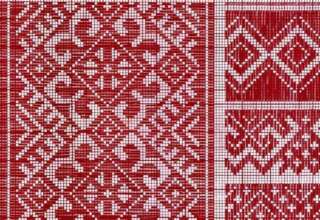
What is constant among theories is that they engage with the human experience. What is variable among theories is the vocabulary used to conceptualize theoretical constructs within the context of different approaches to treatment. The prioritization of what is understood to be problematic from the subjectivity of any given theory also varies. Even subjectivity itself, as a “stance,” is only one among several theoretical orientations regarding client subjectivity, therapist subjectivity, or a goal of objectivity within the therapeutic alliance.
Analytic institutes remain infamous for internecine conflict and fractiousness a full century past Freud’s paternalistic authoritarianism. Internal rifts and feuds occur, often around the tiniest gradations in terms of concepts or terminology or even the naming of systems and theory. I myself completed my training at an institute that had broken with another institute within the same theoretical school. Initially, it was a geographical rift that translated into a prima facie theoretical rift: Chicago (where Kohut was located) vs. New York (where some of his former disciples were located). Analytic distinctions were drawn between the cultural and demographic “field” in these respective cities.
Later, the institute in New York at which I had trained broke in two over whether to include a single word. The Training and Research Institute for Self Psychology is no longer on speaking terms with The Training and Research Institute for Relational Self Psychology. They vie with each other for title to Kohut’s legacy. We need to remember that when we are talking about theories of counseling, we are, at the same time, talking about professional identity. We are asking about a given practitioner’s theoretical family-of-origin. We are also asking about the practitioner’s ability to individuate and forge a new, cohesive identity that may incorporate influences from outside of the family-of-origin. If we are able to think independently, we soon understand that theoretical combinations are unlimited.
Narrative-Emotional Therapy
As Peter Fonagy has stated (Fonagy, 2016), it is often the case that the more experienced we get as practitioners, the less effective we become—because we are more apt to categorize based on our considerable clinical experience. When we are newer to the field, we are less sure of ourselves and we treat each of our patients as a new and unique individual as a matter of course. It’s when we start to know our way around that we lose our way. The realization of this can be disorienting. It often comes as we are finally coming into our own as therapists. This is why it is essential that we keep learning from our colleagues and from our patients. They need us to be authentic with them and to be able to tolerate, along with them, the discomfort of being in a place of “not knowing.”
It can feel like we are doing nothing, and this is particularly scary when we are supposed to be “fixing” our patients—when we apply a medical/disease model to mental health. It is when we have lost our sense of geography that we may, ironically, be at our most therapeutically effective. It is at this point that we as practitioners are not role-playing our teachers or mentors or taking refuge in the distance that our professional nomenclature or technical training allow us.






